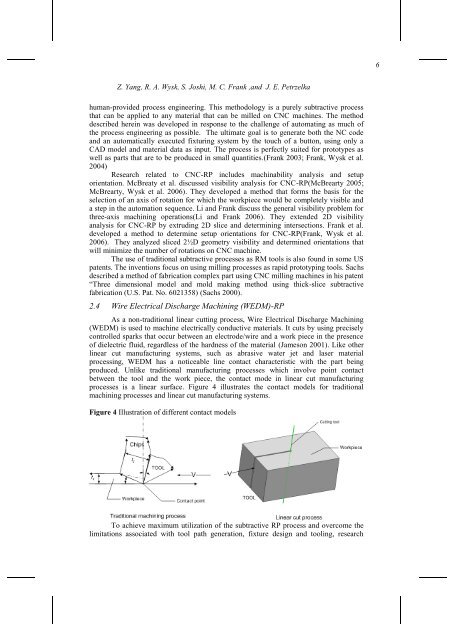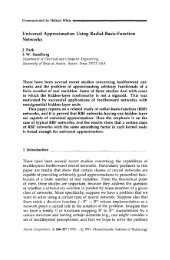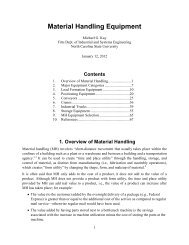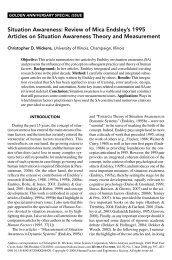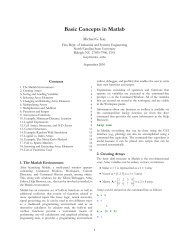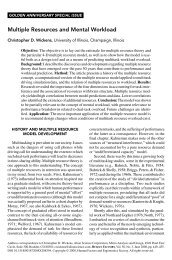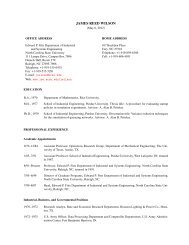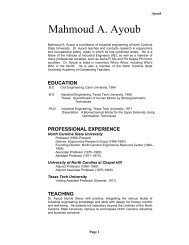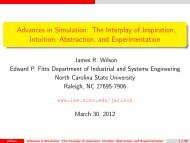Conventional Machining Methods for Rapid Prototyping
Conventional Machining Methods for Rapid Prototyping
Conventional Machining Methods for Rapid Prototyping
Create successful ePaper yourself
Turn your PDF publications into a flip-book with our unique Google optimized e-Paper software.
6<br />
Z. Yang, R. A. Wysk, S. Joshi, M. C. Frank ,and J. E. Petrzelka<br />
human-provided process engineering. This methodology is a purely subtractive process<br />
that can be applied to any material that can be milled on CNC machines. The method<br />
described herein was developed in response to the challenge of automating as much of<br />
the process engineering as possible. The ultimate goal is to generate both the NC code<br />
and an automatically executed fixturing system by the touch of a button, using only a<br />
CAD model and material data as input. The process is perfectly suited <strong>for</strong> prototypes as<br />
well as parts that are to be produced in small quantities.(Frank 2003; Frank, Wysk et al.<br />
2004)<br />
Research related to CNC-RP includes machinability analysis and setup<br />
orientation. McBreaty et al. discussed visibility analysis <strong>for</strong> CNC-RP(McBrearty 2005;<br />
McBrearty, Wysk et al. 2006). They developed a method that <strong>for</strong>ms the basis <strong>for</strong> the<br />
selection of an axis of rotation <strong>for</strong> which the workpiece would be completely visible and<br />
a step in the automation sequence. Li and Frank discuss the general visibility problem <strong>for</strong><br />
three-axis machining operations(Li and Frank 2006). They extended 2D visibility<br />
analysis <strong>for</strong> CNC-RP by extruding 2D slice and determining intersections. Frank et al.<br />
developed a method to determine setup orientations <strong>for</strong> CNC-RP(Frank, Wysk et al.<br />
2006). They analyzed sliced 2½D geometry visibility and determined orientations that<br />
will minimize the number of rotations on CNC machine.<br />
The use of traditional subtractive processes as RM tools is also found in some US<br />
patents. The inventions focus on using milling processes as rapid prototyping tools. Sachs<br />
described a method of fabrication complex part using CNC milling machines in his patent<br />
“Three dimensional model and mold making method using thick-slice subtractive<br />
fabrication (U.S. Pat. No. 6021358) (Sachs 2000).<br />
2.4 Wire Electrical Discharge <strong>Machining</strong> (WEDM)-RP<br />
As a non-traditional linear cutting process, Wire Electrical Discharge <strong>Machining</strong><br />
(WEDM) is used to machine electrically conductive materials. It cuts by using precisely<br />
controlled sparks that occur between an electrode/wire and a work piece in the presence<br />
of dielectric fluid, regardless of the hardness of the material (Jameson 2001). Like other<br />
linear cut manufacturing systems, such as abrasive water jet and laser material<br />
processing, WEDM has a noticeable line contact characteristic with the part being<br />
produced. Unlike traditional manufacturing processes which involve point contact<br />
between the tool and the work piece, the contact mode in linear cut manufacturing<br />
processes is a linear surface. Figure 4 illustrates the contact models <strong>for</strong> traditional<br />
machining processes and linear cut manufacturing systems.<br />
Figure 4 Illustration of different contact models<br />
To achieve maximum utilization of the subtractive RP process and overcome the<br />
limitations associated with tool path generation, fixture design and tooling, research


